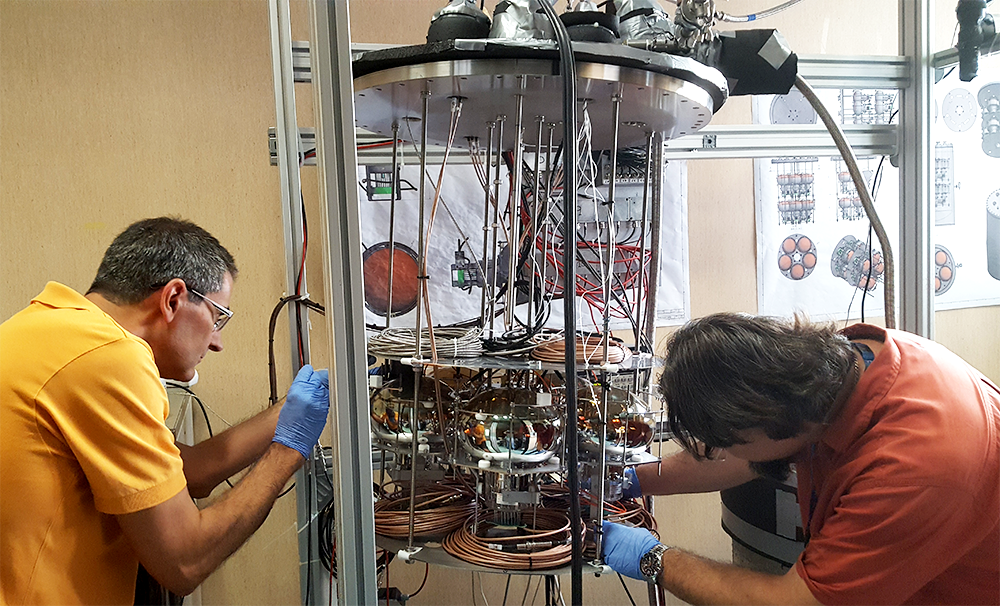
Illuminating the hunt for neutrinos
Jennifer Toes, 12/09/2017

Researchers working on the photomultiplier characterization (Image: Clara Cuesta)
The road to future detectors is paved with prototypes. Such is the case for the 3x1x1 m3 liquid argon detector – a preliminary version of the future detector modules for the Deep Underground Neutrino Experiment (DUNE). The prototype uses “dual phase” technology, where neutrinos interact in liquid argon and create charges which are passed into gaseous argon and amplified.
Whilst DUNE is hosted at Fermilab in the United States, the 3x1x1 m3 detector is several thousand miles away at CERN in Switzerland. After months of construction, the detector was installed into the lab’s accelerator complex before taking its first data in June 2017.
The detector allows researchers to understand the behaviour of neutrinos by using argon. Neutrinos produce signals, such as electrons or light, when they come into contact with matter. This means when neutrinos pass through the argon, researchers can use these signals to reconstruct their path.
However, using dual phase technology (ie: using both liquid and gaseous forms of argon) requires some tweaking to optimise the detection systems for future use. As such, researchers from Task 8.4 of Work Package 8 (WP8) of the AIDA-2020 project have been working to do just that.
“We are responsible for the light detection system, specifically the photomultipliers that detect and amplify the light produced by the particle interactions in the liquid and gaseous argon,” said Clara Cuesta, an AIDA-2020 Post Doc, based at the Unit of Excellence María de Maeztu-CIEMAT-Particle Physics in Spain.
“At the moment we are performing characterization tests of the photomultipliers to understand their response to different light signals.”
After analysing the data, scientists involved in Task 8.4 will use this information to inform design considerations for the ProtoDUNE dual phase detector of 6x6x6 m³ - a larger-scale prototype.
The 6x6x6 m³ will then be tested with charged particle beams in 2018, with the aim of characterizing the detector’s performance with full-scale detector components and validating the installation plans.
At the same time, the task group is also working on the light detection system for ProtoDUNE using 36 cryogenic photomultipliers. Not only has the team designed and produced electrical components to help operate the devices, but are currently performing tests to understand their response to various light signals.
In addition, the researchers are in the process of designing and testing a light monitor system, which will help to verify the correct functioning of the photomultipliers. The light readout system will be installed inside the ProtoDUNE dual phase detector at CERN in 2018. Data taking is expected to begin during the same year.
The performance of ProtoDUNE dual phase detector will be key for the DUNE Technical Design Report, which will influence future design considerations.
